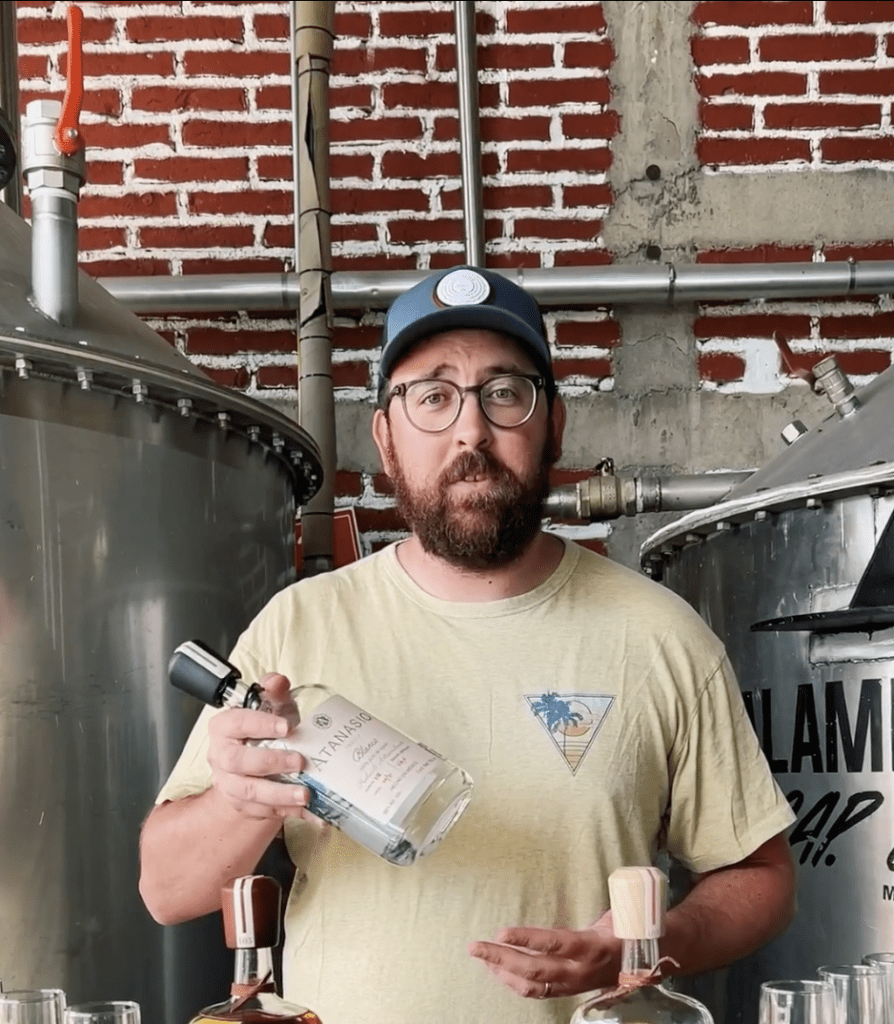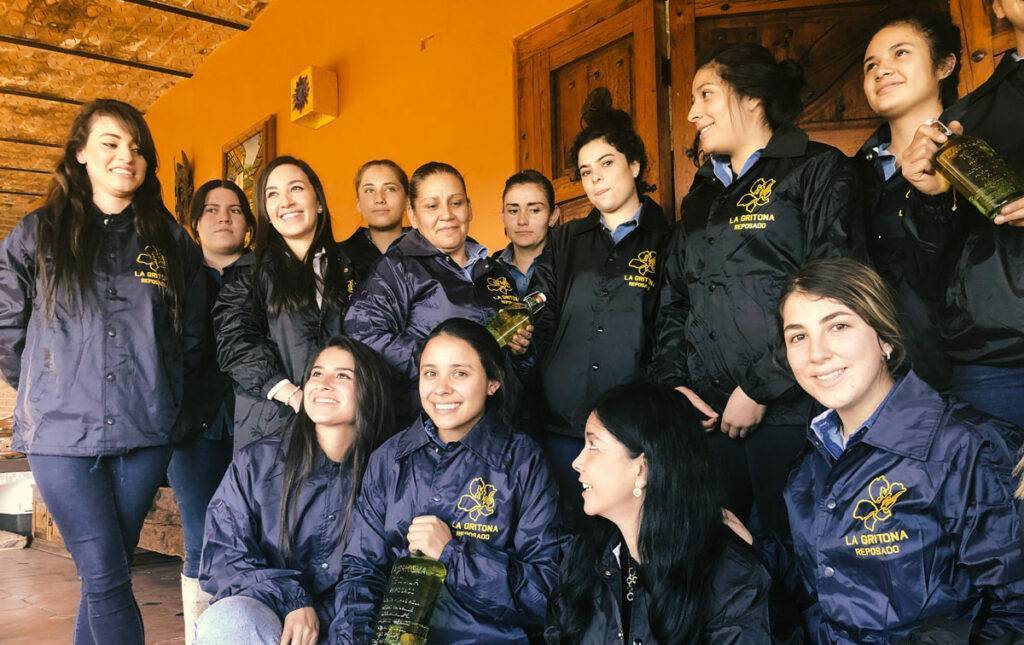The best tequila is created with care for the land. Here’s why that matters — and how you can find a tequila that goes down smooth.
Good Libations is a regular Bluedot feature that serves up info on how to make sustainable (and delicious!) drink choices.
Tequila is a distilled spirit made from the blue agave plant that is produced in five areas of Mexico: Jálisco (where ~99% of tequila is produced), Guanajuanto, Michoacan, Tamaulipas, and Nayarit. Tequila is a subcategory of mezcal — mezcal has no regional limitations on its designation and can be made from any variety of agave, not just blue agave.
Every day, it seems like there’s another celebrity announcing another launch of a new tequila label. There’s Kendall Jenner’s 818 Tequila, Nick Jonas’ Villa One, Dwane “The Rock” Johnson’s Teremana, and the list goes on. Even for the savvy consumer, this rapid boom in new tequila brands can be tricky to navigate — what has led to this tequila explosion and how can we support brands who not only produce high-quality products, but also craft tequila in a way that respects the planet?
The United States consumes more tequila per capita annually than any other country in the world, including Mexico, where tequila is the national drink. Each year, American consumers spend $2.9 billion dollars on margaritas, nearly 15% of all cocktail sales. With increased popularity and demand, there’s increased production pressure from Mexico’s agave fields. This has a cascading impact not only on the quality of tequila being produced by large-scale industrial distilling operations (the likes of which are often contracted to produce the many celebrity tequilas on the market), but also on the land and soils of Jálisco.
American consumers spend $2.9 billion dollars on margaritas, nearly 15% of all cocktail sales.
With tequila, as is the case with any agricultural product, the more care taken with the plants and the land, the higher the quality of the resulting product. To produce tequila in a way that respects both the traditions of the spirit and the resources used in the distilling process, agave should be harvested when it is fully matured. It can take up to seven years for an agave plant to reach full maturity. Mature agave is rich with juices and extractable matter that can be carefully crafted into delicate and complex tequilas that are rich with terroir, or the characteristics of the land. With rapid increases in demand for tequila, agave farmers and tequila producers do not always have seven years to wait for the plants to reach full maturity. So, what do they do?
Enter: the diffuser.
The diffuser is a controversial piece of tequila production technology that uses water and sulfuric acid to extract 98-99% of the available sugars from raw, young agave (often only one to two years old). This allows for faster crop rotation and a quicker turnaround on the production of a greater quantity of bottled tequila. However, immature agave plants provide significantly less raw material than mature agave, which decreases the efficiency of the agave supply over time and leads to the periodic agave shortages we’ve seen in recent years. Further, because younger agave plants have underdeveloped roots and rapid harvest cycles prevent helpful biodiversity from developing in the plots, the topsoil of these crops is increasingly vulnerable to wind and rain, which has devastating long-term effects on Mexico’s landscape.
When agave is harvested too young, the plant is less developed and cannot be meaningfully transformed into a tequila without serious manipulation and additives. Tequila that is made with immature agave plants with a diffuser lacks the depth and richness of a tequila made with plants that are well cared for. Also, tequila that is made using a diffuser often has a characteristically medicinal taste that most find unpleasant even after manufacturers use additives to further homogenize the taste. But how can we know if a tequila has been made with a diffuser?
Rob Gerard is the founder of the Tequila Collective, an online community of tequila enthusiasts who share a passion for understanding and sharing the history of tequila from its origins in the Aztec Empire to its modern expressions today. When thinking about how the average consumer can knowledgeably engage with tequila he says, “the biggest issue with the tequila industry is a lack of transparency.”

According to Gerard, the easiest way to gain insight into the contents of a tequila bottle is with the app Tequila Matchmaker: “The app has an ‘additive-free program’ where the founders of Tequila Matchmaker visit distilleries that they’re invited to — they have to be invited since they aren’t any kind of officially regulatory body — and they confirm that the tequila is being made with no additives.”
For more advanced tequila drinkers, you can start to recognize different NOMs (Norma Oficial Mexicana), or 4-digit codes that denote a tequila’s originating distillery: “If something’s coming from NOM 1579, which is the El Pandillo distillery, I know that that’s going to be a good quality product, even if I’ve never tried that specific tequila. Whereas if I’m getting something from the José Cuervo NOM [1104], chances are it’s mass produced, they’re using additives, and it’s not a very good product. They’re using immature agave, and that’s why they have to use additives to sweeten it up, make it drinkable.”
Between the field and the glass, agave passes through many complex and intersecting systems. The issues with the modern tequila industry extend from farming and production practices to labor exploitation and lack of government regulation. Though it is easy to become frustrated with the whirlwind of interests entangled in consciously consuming tequila, we are not without hope! With increased attention being brought to the industry by enthusiasts like the Tequila Collective, and even celebrities shining a mainstream spotlight on the spirit, there is pressure on the market to enhance transparency and give consumers more insight into what has been happening behind closed distillery doors. Additionally, as the craft tequila market continues to grow, there is more demand for small-production tequilas made from sustainably farmed agaves as is true to the spirit’s roots.
Julia Cooper’s Good Libation: My personal recommendation for a great quality tequila made with sustainability in mind is La Gritona Reposado. La Gritona is completely woman-owned and operated, made with fully matured agave in a diffuser-free facility, and bottled entirely in recycled glass accumulated within a mile radius of the distillery. The first time I tried La Gritona, I enjoyed sipping it straight up — something I never thought possible based on my prior tequila experiences! Nowadays, I love using La Gritona to add a smokey depth to fresh-squeezed, agave-sweetened lemonade (or limeade, depending on what citrus I have on hand).


La Gritona is available throughout the United States. If you’re not seeing it on the shelves, put in a request with the staff at your local liquor store!


